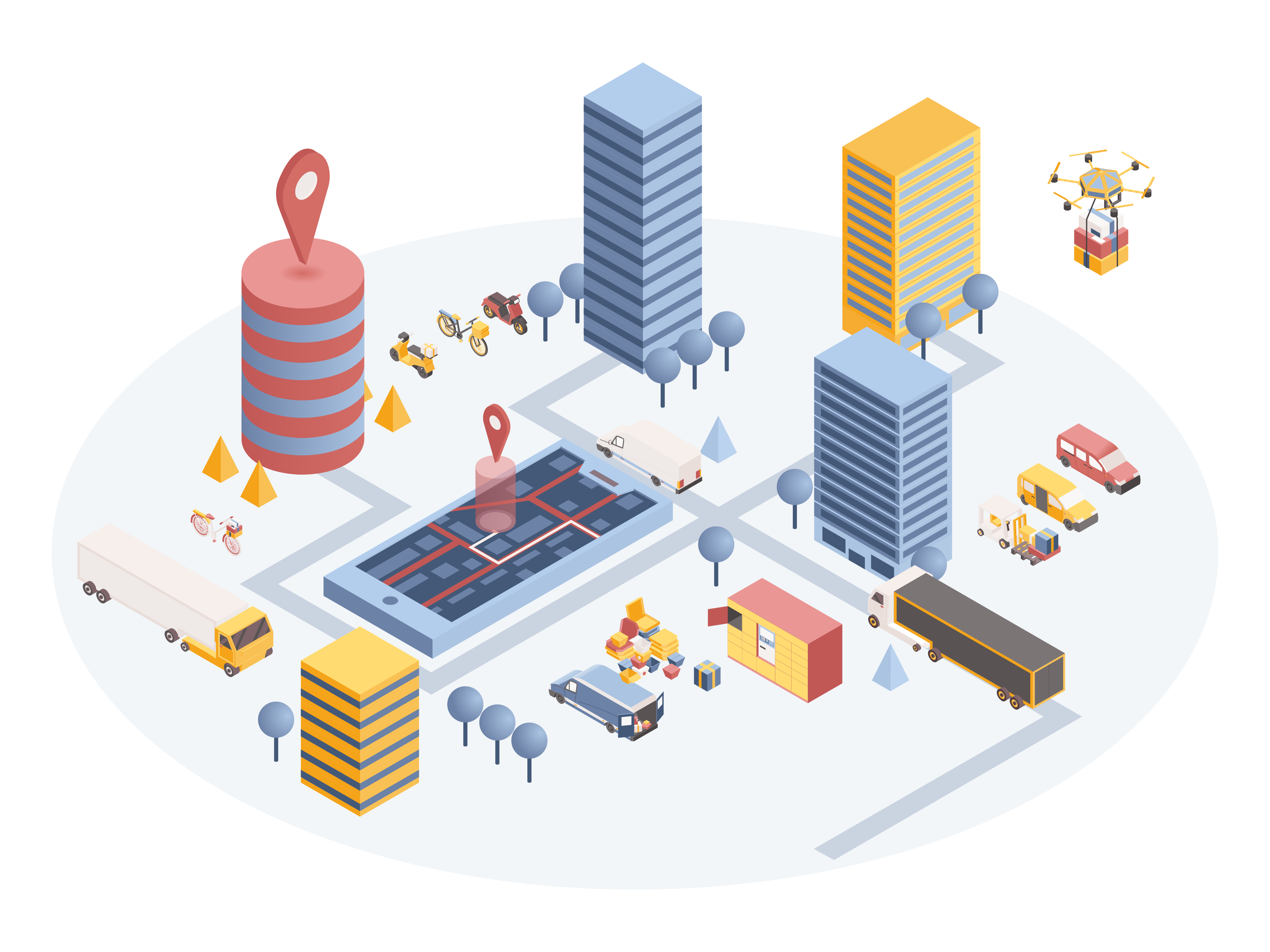What is urban logistics?

Urban logistics: a multi-stage real estate project
Reorganising urban delivery is an urgent necessity for several reasons. With 15 to 20% of road traffic, it generates 45% of fine particle emissions due to transport. The impact on greenhouse gas emissions is comparable. Other effects justify specific attention: urban delivery contributes to road congestion, particularly during parking, but also to noise emissions and accident risks.
Due to the multiplicity of flows in urban areas, urban logistics is made up of a myriad of often highly fragmented operations. This dispersion of flows is exacerbated by the growth of e-commerce and the speed, sometimes even the immediacy, sought by recipients.
The public authorities' awareness of these issues has led to increasingly stringent regulations in the heart of cities, as well as the emergence of Low Emission Zones.
Urban delivery is becoming a business
Urban logistics must therefore be structured around different organisations and vehicles that are better adapted to the dense urban environment: electric vehicles, CNG[1]vehicles, velocargoes, and sometimes even delivery on foot.
To deliver in clean vehicles and better consolidate flows, it is therefore necessary to bring logistics real estate closer to the urban area. Several levels are becoming increasingly clear.
On the outskirts of major cities, parcel delivery and groupage services provide consolidation solutions. For example, the Urby company, an entity of the La Poste group already present in more than 20 conurbations, is a response to the need for better consolidation of flows.
A second link, closer to the city centre, is made up of Local Logistics Areas that allow deliveries to be made by bicycle or small electric vehicles. These spaces, ranging from a few hundred to a few thousand square metres, play an essential role in the reorganisation of delivery.
Some even smaller spaces can be set up in neighbourhoods for local deliveries, relay points or concierge services. Often located at the foot of buildings, they provide a very local response to the needs of a neighbourhood.
Each of these spaces has a set of operators who develop services adapted to the requirements of customers.
Bringing stocks closer to consumers
Delivering faster also means bringing stocks closer together. While speed of delivery has always been a necessity in sectors such as healthcare or spare parts, the most visible real estate impacts are now in the food sector.
Three forms of space are gradually meshing the urban areas. Dark stores, local food warehouses, with a surface area that varies according to the number of products on offer - from 300 to nearly 1,500 m² - enable orders to be prepared and delivered in a few dozen minutes. In a recent study, the APUR[2] counted more than 80 such spaces in Paris for distribution groups such as Franprix or Monoprix, but above all for high-profile quick commerce players such as Cajoo, Gorillas, Getir or Flink.[3]
Just as supermarket drives are on the outskirts of towns, the concept of pedestrian drives in the heart of towns is becoming a real estate product in its own right. Generally only a hundred square metres in size, it allows large retailers such as E.Leclerc or Auchan to offer the range of products of a supermarket. One of the latest variations of this concept is the automatic pedestrian drive designed by Delipop, which has just opened its first space in Paris.
A third type of space completes this network: dark kitchens. These are shared kitchens dedicated to deliveries and are located in the city centre or in the immediate suburbs, with variable surface areas. 25 dark kitchens have already been listed by the APUR in Paris intramuros.
The real estate landscape of major cities will thus see the development of new categories of logistics spaces, but also of retail and delivery players. But beyond the proposed concept, these players, often recently created, will have to compete with creativity and energy to find a model that is balanced in environmental, social and economic terms. This is the challenge they face.